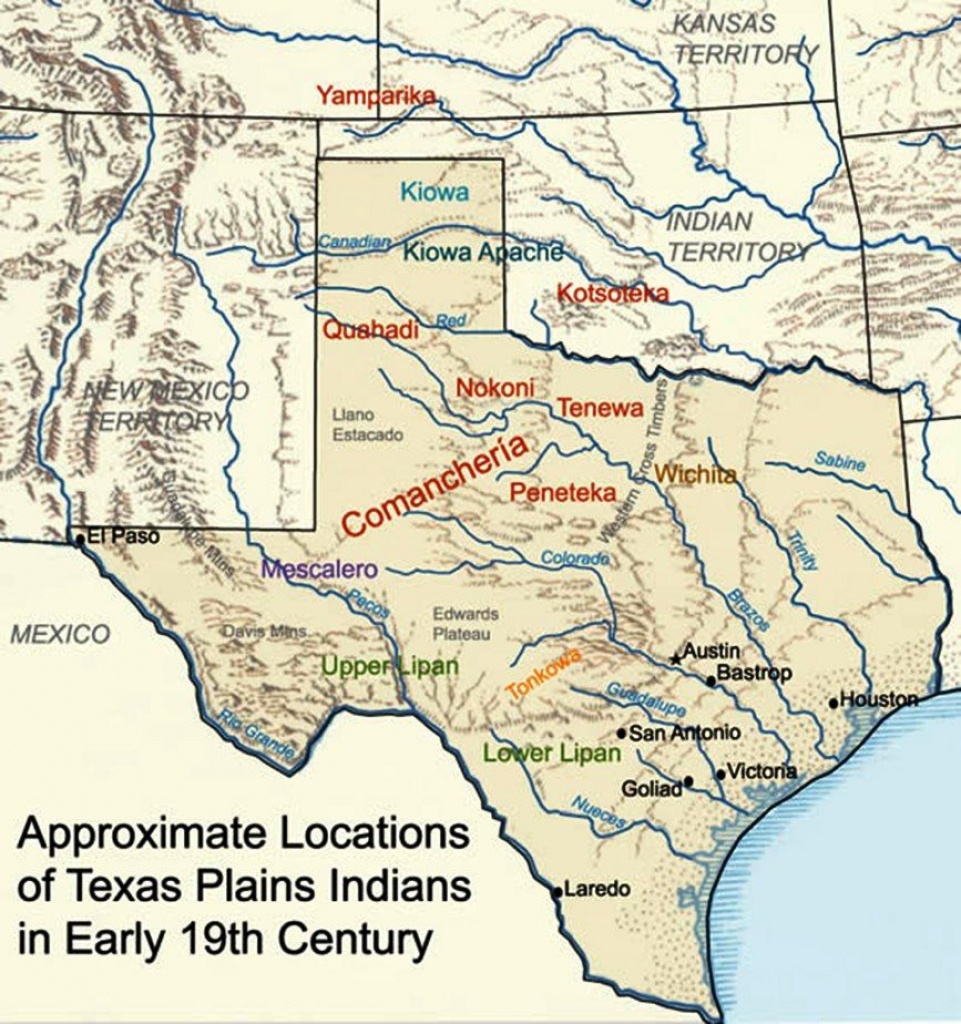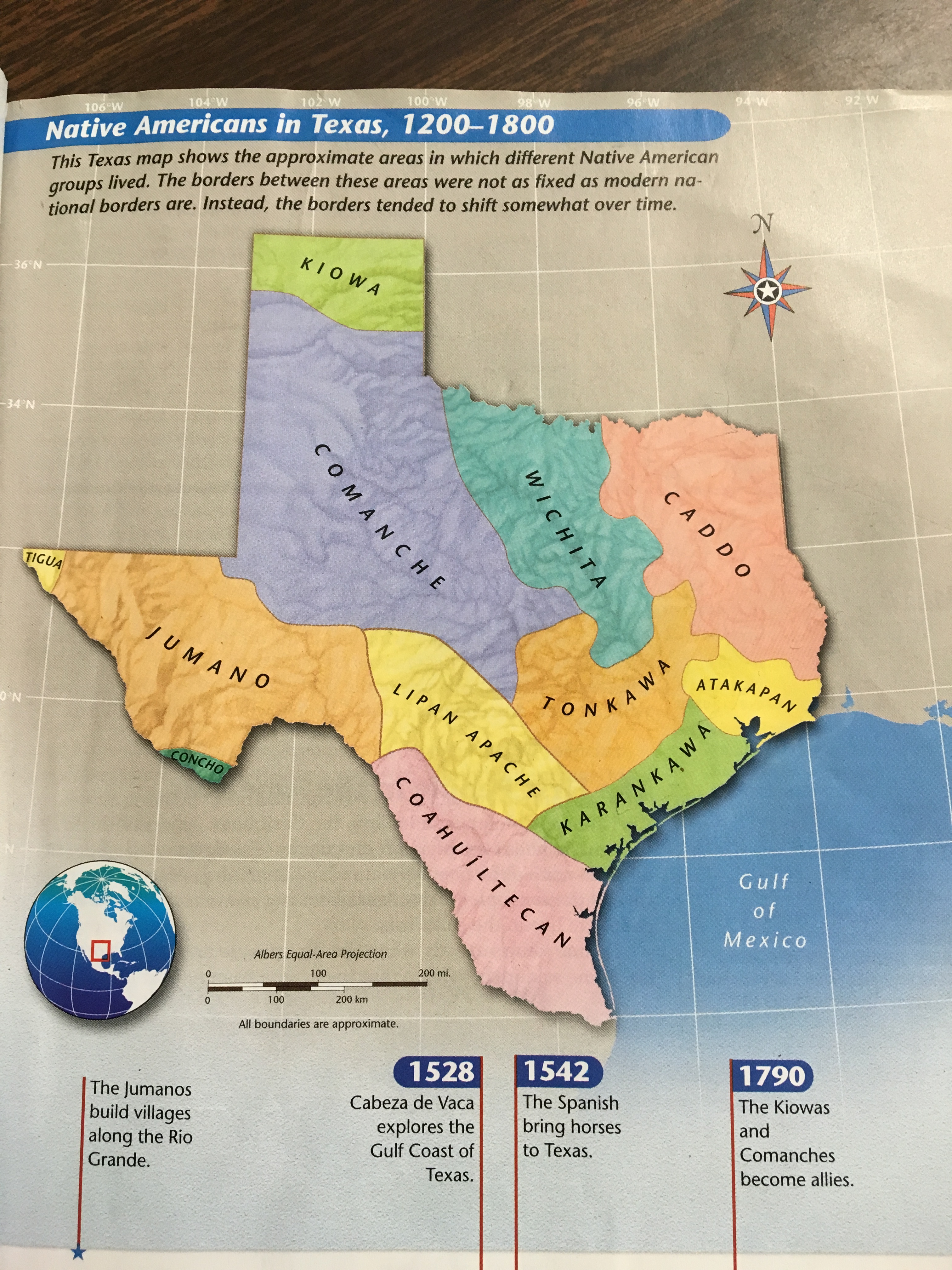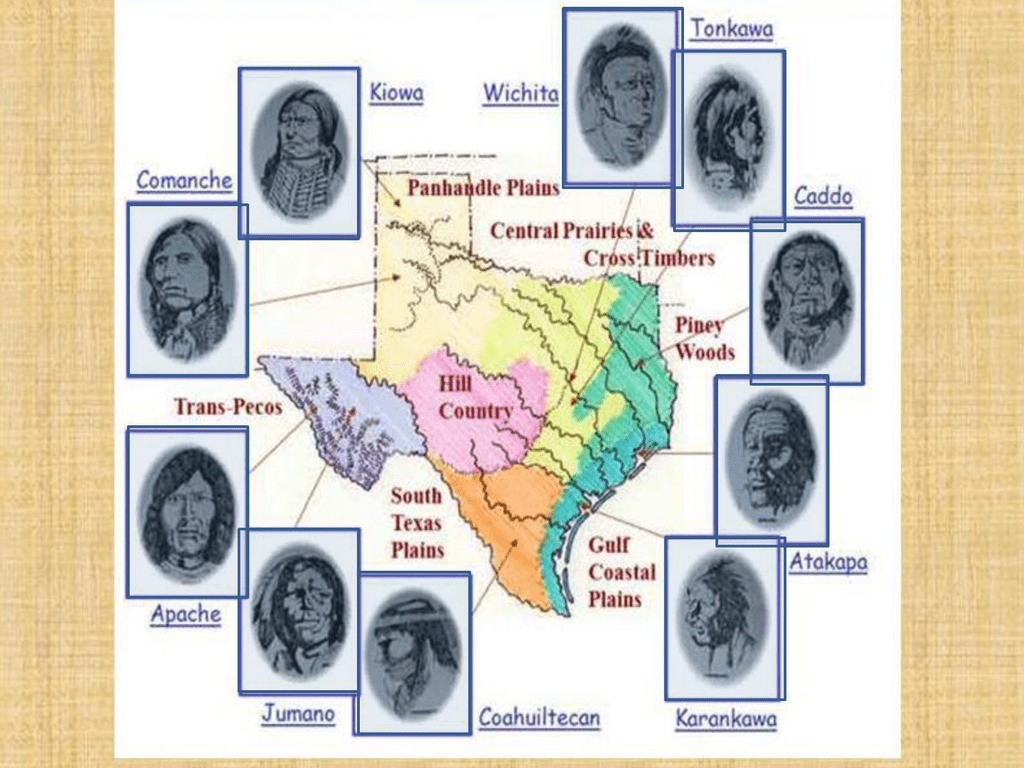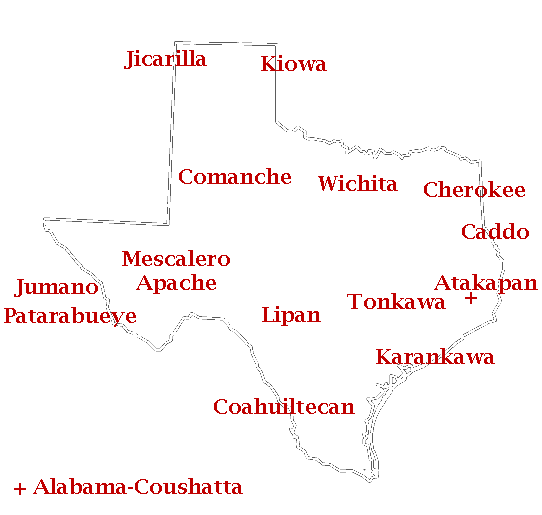A Journey Through Time: Exploring the Native American Tribes of Texas on a Map
A Journey Through Time: Exploring the Native American Tribes of Texas on a Map

The Lone Star State, known for its vast plains, rugged mountains, and bustling cities, holds a rich history deeply intertwined with the stories of its original inhabitants – the Native American tribes. Understanding the diverse tapestry of these tribes, their unique cultures, and their enduring legacy is crucial to appreciating the true essence of Texas. This article delves into the fascinating world of Native American tribes in Texas, using a map as our guide to unraveling their history, traditions, and enduring influence.
A Tapestry of Tribes: Unveiling the Map
Related Articles: A Journey Through Time: Exploring the Native American Tribes of Texas on a Map
- Discover Enchanting Pueblos in New Mexico: Timeless Beauty Awaits
- Unveiling the Rainbow of Colors: Explore the Cherokee’s Colorful Canvas
- Unveiling America’s Richest Tribes: Exquisite Wealth and Cultural Heritage!
- Unveiling the Exotic Charms of the World’s Most Intriguing Tribes
- Fascinating Feathers: Unlocking the Mesmerizing Beauty of Bird Feather Art
Texas, before the arrival of European settlers, was a vibrant mosaic of numerous Native American tribes, each with its own distinct language, customs, and way of life. A map depicting these tribes reveals a fascinating geographical distribution, showcasing the diverse landscapes they inhabited.
The Eastern Woodlands: A World of Woodlands and Rivers
The eastern region of Texas, encompassing the rich forests and fertile river valleys, was home to several tribes belonging to the Caddoan language family. The Caddo, a powerful and sophisticated tribe, dominated the area around present-day East Texas. Their villages, often fortified with palisades, were strategically located near rivers, providing access to abundant resources. The Hasinai, a closely related tribe, inhabited the region north of the Caddo, known for their skilled pottery and intricate beadwork. The Wichita, further west, were renowned for their skilled buffalo hunting and their intricate social structure.
The Southern Plains: Nomadic Warriors and Buffalo Hunters
The vast grasslands of the Southern Plains, stretching across central and western Texas, were the domain of the nomadic tribes who relied on the buffalo for their survival. The Comanche, fierce warriors known for their equestrian skills and strategic warfare, dominated this region. Their vast territory spanned from the Texas Panhandle to the Rocky Mountains, making them a formidable force. The Kiowa, closely allied with the Comanche, were equally skilled in horsemanship and buffalo hunting. The Apache, a diverse group of tribes, also roamed the plains, known for their resilience and adaptability.
The Coastal Plains: Skilled Fishermen and Farmers
The coastal plains of Texas, bordering the Gulf of Mexico, provided a unique environment for tribes who adapted to a life of fishing and farming. The Karankawa, known for their distinctive language and their skilled canoe building, thrived along the coast. The Tonkawa, nomadic hunters and gatherers, also inhabited this region, known for their fierce independence and their unique social structure.
The Trans-Pecos: Desert Dwellers and Skilled Craftsmen

The rugged Trans-Pecos region, characterized by its arid deserts and towering mountains, was home to a small but resilient group of tribes. The Jumano, known for their skilled pottery and their trade networks, thrived in this challenging environment. The Apache, specifically the Lipan and Mescalero tribes, also inhabited this region, adapting to the harsh conditions and utilizing their knowledge of the land for survival.
Enduring Legacy: The Impact of Native American Tribes on Texas
The Native American tribes of Texas left an indelible mark on the state’s landscape, culture, and history. Their names echo in place names, their traditions are woven into the fabric of Texan folklore, and their stories continue to inspire and resonate with generations.
The Influence on Language and Place Names:
Many Texas place names are derived from Native American languages. For example, the word "Texas" itself is believed to have originated from the Caddo word "tejas," meaning "friends" or "allies." Other examples include "Amarillo," meaning "yellow" in Spanish, derived from the Comanche word "amara," and "San Antonio," named after Saint Anthony of Padua, a patron saint of the Native American tribes who inhabited the area.

The Legacy of Art and Crafts:
The artistic traditions of the Native American tribes of Texas are rich and diverse. The Caddo were renowned for their intricate beadwork, pottery, and stone tools. The Comanche and Kiowa were skilled in leatherwork, beadwork, and quillwork. These artistic traditions continue to inspire contemporary artists and artisans, preserving a vital part of Texas’ cultural heritage.
The Enduring Impact on Food and Cuisine:
The culinary traditions of Texas are deeply rooted in the Native American tribes who called the state home. The use of corn, beans, squash, and other indigenous crops is a testament to the ingenuity and adaptability of these tribes. The traditional methods of cooking, such as roasting, grilling, and drying, continue to be practiced by Texans today, creating a unique and flavorful culinary heritage.
The Resilience and Resistance: A Story of Strength and Survival

The history of Native American tribes in Texas is not only a story of rich cultural traditions but also a story of resilience and resistance. They faced numerous challenges, including displacement, disease, and conflict with European settlers. Despite these hardships, they fought for their land and their way of life, leaving a legacy of strength and courage that continues to inspire.
The Importance of Understanding and Appreciation:
Understanding the history and cultural heritage of the Native American tribes of Texas is crucial for appreciating the full story of the Lone Star State. It is essential to recognize their contributions to the state’s rich tapestry and to honor their enduring legacy. By engaging with their stories, we can foster a deeper understanding and appreciation of the diversity and resilience of Texas’ past and present.
A Journey of Discovery: Exploring the Map
The map of Native American tribes in Texas is more than just a geographical representation; it is a window into a rich and complex past. Each tribe, each location, and each story holds a unique piece of Texas’ history. By taking the time to explore this map, we can embark on a journey of discovery, learning about the diverse cultures, traditions, and enduring legacy of the Native American tribes who shaped the Lone Star State.
FAQ: Native American Tribes Map of Texas
Q: What were the major Native American tribes in Texas?
A: The major tribes include the Caddo, Hasinai, Wichita, Comanche, Kiowa, Apache, Karankawa, Tonkawa, and Jumano.
Q: Where can I find a map of Native American tribes in Texas?
A: You can find maps online through various resources, including the Texas Historical Commission, the Texas State Library and Archives Commission, and the National Museum of the American Indian.
Q: What are some of the most significant historical sites related to Native American tribes in Texas?
A: Notable sites include the Caddo Mounds State Historic Site, the Comanche National Grassland, and the Fort Davis National Historic Site.
Q: How can I learn more about the cultural traditions of Native American tribes in Texas?
A: You can visit museums, attend cultural events, read books and articles, and engage with tribal communities.
Q: What are some ways to support Native American tribes in Texas?
A: You can support tribal businesses, attend cultural events, donate to Native American organizations, and advocate for their rights and interests.
Q: Are there any Native American tribes still living in Texas today?
A: Yes, several federally recognized tribes still reside in Texas, including the Alabama-Coushatta Tribe of Texas, the Kickapoo Tribe of Texas, and the Ysleta del Sur Pueblo.
Q: What is the importance of acknowledging the history of Native American tribes in Texas?
A: Acknowledging their history is essential for understanding the complete story of Texas, recognizing their contributions to the state’s cultural heritage, and fostering a respectful and inclusive society.
Conclusion
The map of Native American tribes in Texas is a testament to the rich and diverse history of the Lone Star State. It is a journey through time, offering a glimpse into the lives, cultures, and resilience of the people who called this land home for centuries. By exploring this map and learning about the stories of these tribes, we can gain a deeper appreciation for the true essence of Texas, honoring their enduring legacy and fostering a deeper understanding of the state’s unique and complex history.

Closure
Thus, we hope this article has provided valuable insights into A Journey Through Time: Exploring the Native American Tribes of Texas on a Map. We thank you for taking the time to read this article. See you in our next article!